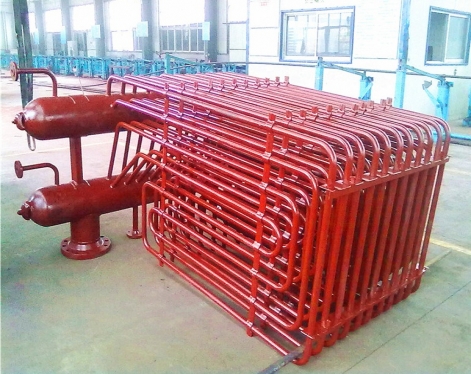Superheater is a heat-absorbing surface that heats saturated or slightly superheated steam to a specified superheat temperature, typically composed of boiler tubes.The superheater tube is a critical component in a boiler that heats a certain pressure of saturated steam to the corresponding pressure of superheated steam. These heat-absorbing surfaces are primarily made up of boiler tubes.
The part of the boiler that further heats steam from the saturation temperature to the superheat temperature is also known as a steam superheater. The core component of these superheaters is the boiler tubes, which are responsible for transferring heat to the steam. Most industrial boilers do not equip superheaters because many industrial processes and living facilities only require saturated steam. However, in power station, locomotive, and marine boilers, to enhance the cycle thermal efficiency of the entire steam power device, superheaters are generally installed. The use of superheated steam can reduce the moisture content in the exhaust steam of the turbine. The temperature of superheated steam depends on various factors, including the boiler pressure, evaporation capacity, the heat-resistant performance of the boiler tubes, and the cost ratio of fuel to steel materials.
Superheaters can be categorized by heat transfer methods into convective, radiant, and semi-radiant types; and by structural characteristics into helical coil, platen, wall, and enclosure styles. All of these types of superheaters consist of several parallel boiler tubes and inlets and outlets header boxes. The outer diameter of the boiler tubes is typically 30-60 millimeters. The convective superheater is the most commonly used, often adopting the helical coil style. It has a relatively dense tube bundle arranged in the flue gas temperature of 450-1000°C, subject to transverse and longitudinal flushing by the flue gas. The platen superheater, composed of multiple tube panels, is arranged in the upper part of the furnace chamber or at the outlet, belonging to radiant or semi-radiant superheaters. In power station boilers above 10 MPa, both platen and helical coil superheaters are generally used in conjunction to increase heat absorption.
Changes in boiler operating conditions, such as load levels, fuel changes, and combustion conditions, all affect the outlet steam temperature of the superheater, especially the temperature of the steam flowing inside the boiler tubes. Therefore, in power station boilers, there are means to adjust the outlet steam temperature of the boiler to stabilize it at a specified value. Common methods include: ① Directly adjusting the steam temperature with spray or surface desuperheaters; ② Changing the furnace outlet flue gas temperature with swing burners; ③ Adjusting the heat absorption of the superheater with flue gas recirculation.
The metal of the boiler tubes bears the highest temperature among the pressurized components of the boiler, so it is necessary to use high-temperature resistant, high-quality low-carbon steel and various chrome-molybdenum alloy steels. Sometimes, austenitic chromium-nickel stainless steel is also used for the parts that bear the highest temperature. If the temperature borne by the boiler tubes during boiler operation exceeds the allowable limits of material endurance strength, fatigue strength, or surface oxidation, tube rupture and other accidents may occur.










